Engraved glasses, table, food, champagne
A culinary intervention recreating a Soviet-style gathering: a table set with snacks and champagne. Each glass is engraved with the number “58” — a reference to Article 58 of the Soviet penal code, used to prosecute vaguely defined “counter-revolutionary” acts between 1927 and 1958.
The clinking of glasses and shared celebration evoke joy and belonging. But the engraved “58” interrupts the ritual, marking a rupture between gesture and meaning. Oppression, the work suggests, is not only imposed by force, but also through normalization.


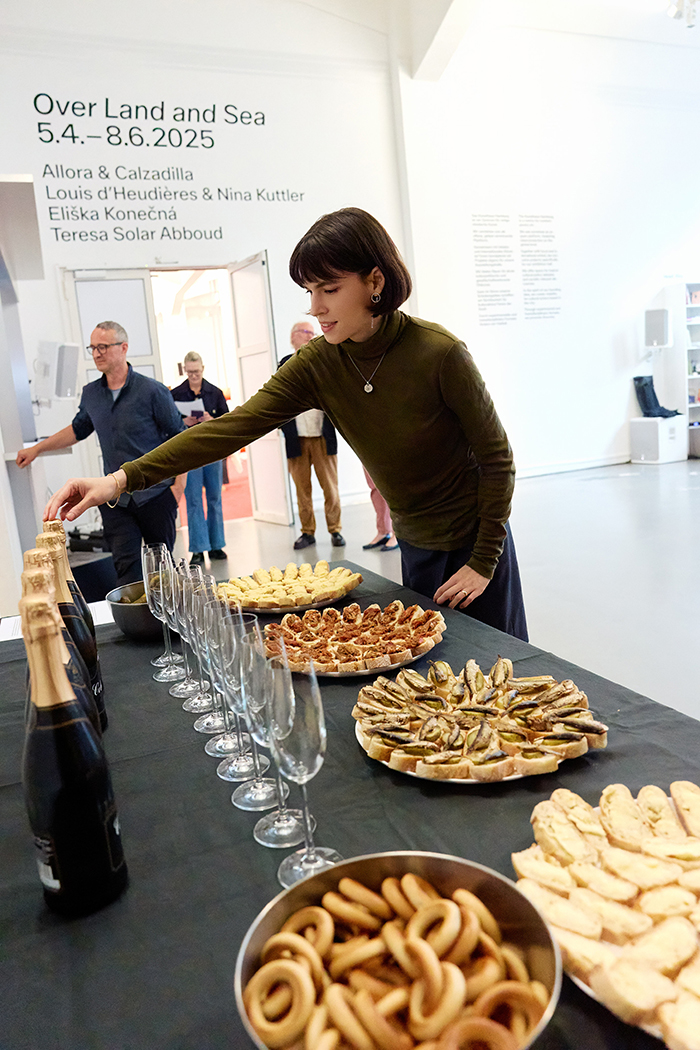
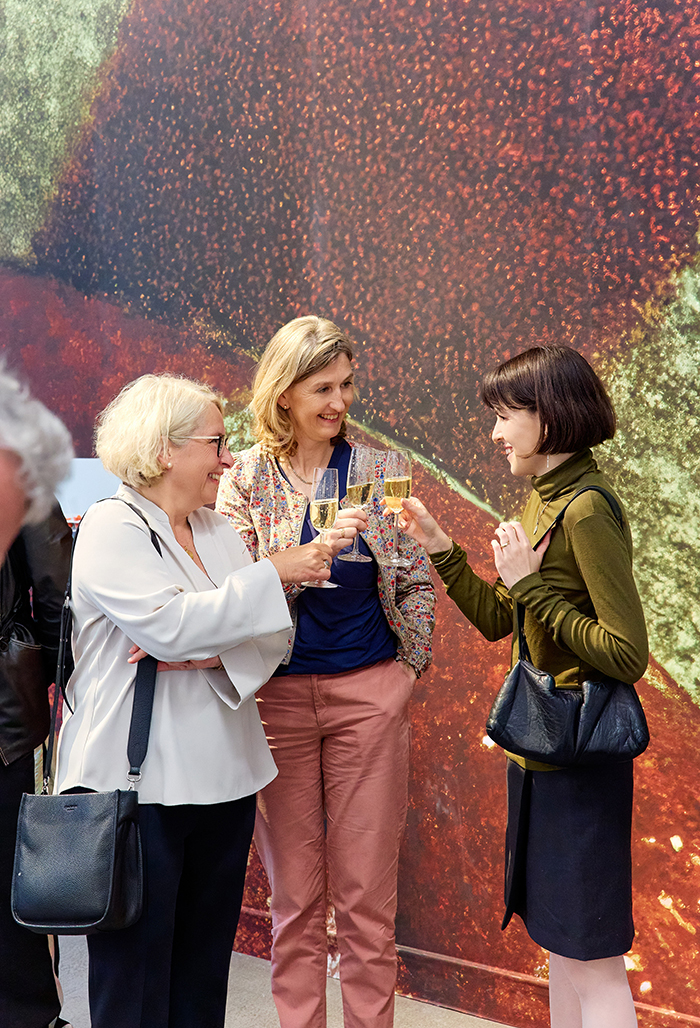

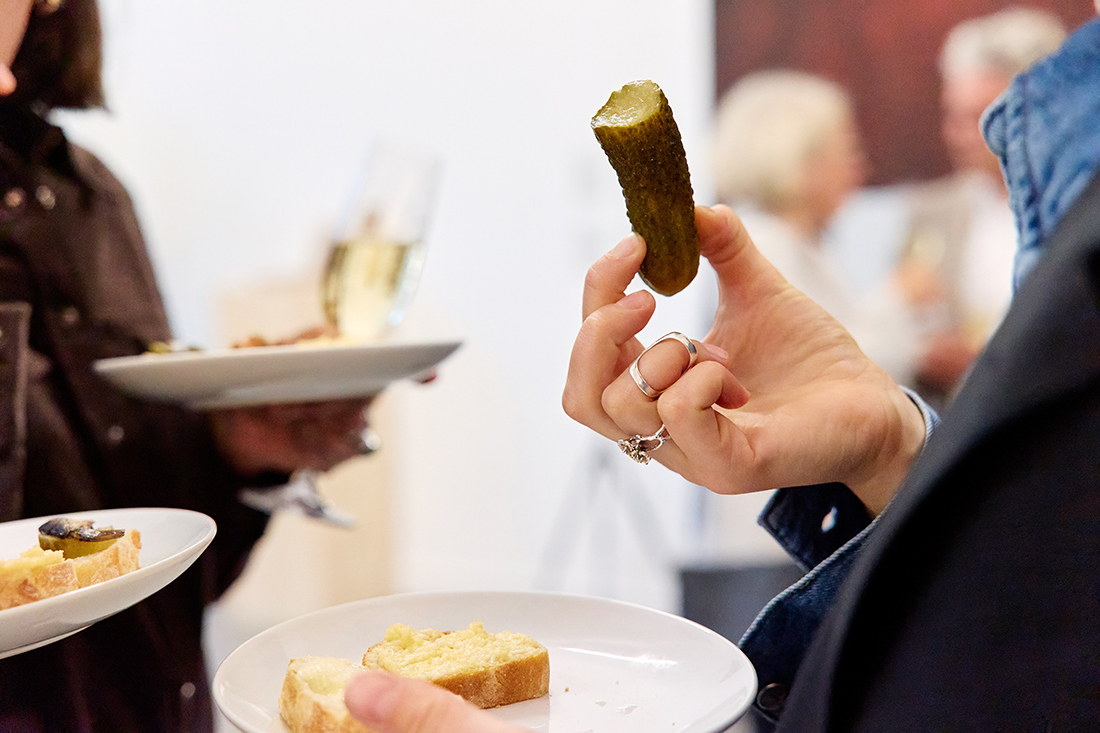
Photos: Mattia Quaglia (1), Sven Wied (2-6)
67 x 14 x 7 cm, PLA 3D printing, blue velvet, toy violin
The work The World’s Smallest Violin is connected with Yevgeny Prigozhin (1961–2023), the founder of the private military company Wagner.
The symbol of the Wagner Group is a sledgehammer. In November 2022, Prigozhin presented the European Parliament with a violin case containing a sledgehammer. Inspired by Prigozhin’s idea, I created a suitcase in the form of a sledgehammer with a small violin inside it.
The title of the work refers to the iconic gesture from Tarantino’s Reservoir Dogs. The gesture of the “world’s smallest violin” (rubbing the thumb and index finger together) is used to express sarcasm and a lack of sympathy, often as a reaction to someone exaggerating their plight or unjust treatment.

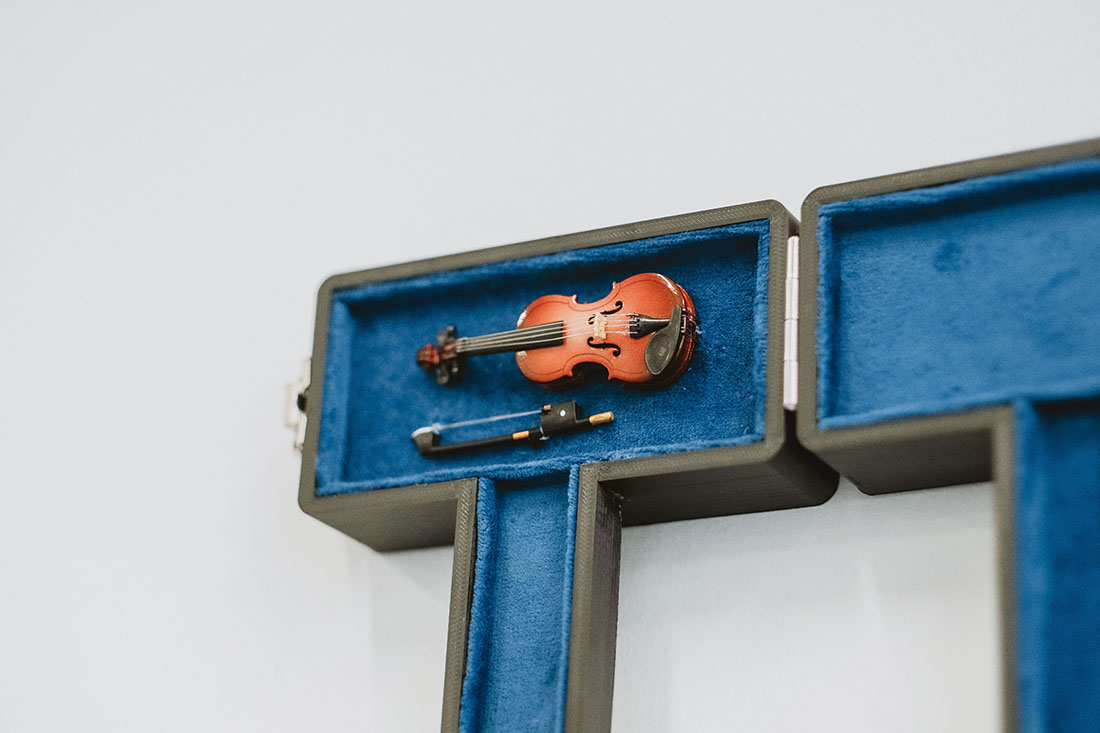
Photos: Manuel Abella
MEDIA CURTAIN, 2024–ongoing
Plexiglass, perforated aluminum plate, 9 smartphones, cables, USB chargers, 60 × 90 cm


12 calendars, 70x100 cm each, silkscreen on recycled paper
A series of 12 calendars reflects the imaginary world of the protagonist of the books about popadantsy, or travelers to the past of Russia.
The first calendar begins on February 24, 2022, the day Russia invaded Ukraine, with dates arranged in reverse order, moving backward from February 2022 to March 2021.
Each calendar is a collage of nostalgic images from the Soviet past, including one that references the Soviet Union’s victory in World War II.
The background for collages is old Soviet wallpaper print, the pattern of which is familiar to everyone from that time.
Photos: Manuel Abella
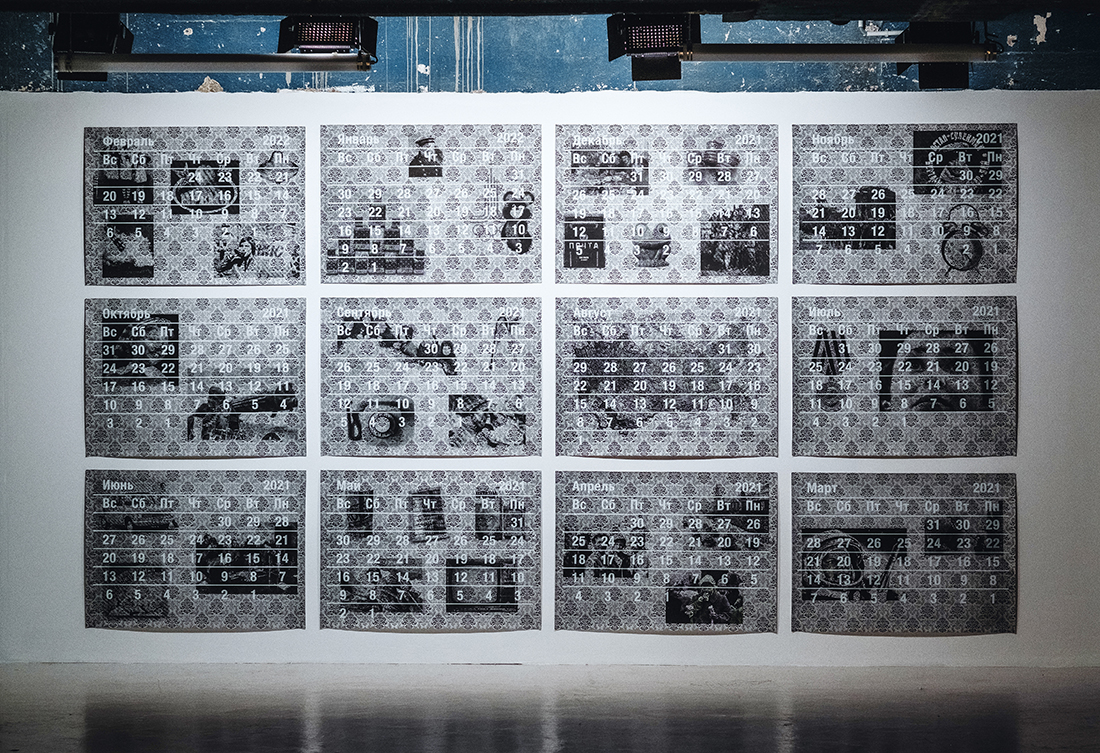
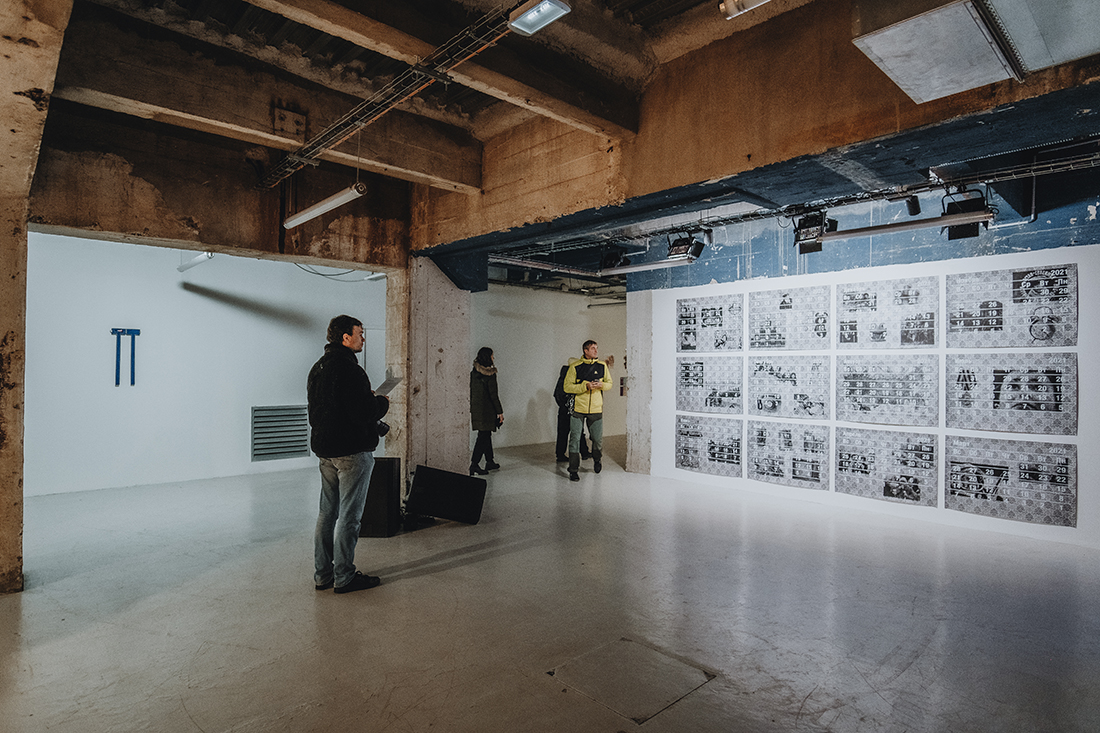

Projection 700 x 270 cm, mirrors, sound: 49:10 min.
Not Everyone Will Be Taken to a Bunker is a multimedia installation, conceived for an exhibition at Hajusom e.V. in a bunker on Feldstraße in Hamburg.
Bomb shelters have been integral to Israeli architecture since the nation’s founding in 1948. Israeli law mandates that all homes, residential buildings, and industrial facilities be equipped with bomb shelters. Covering approximately 60% of Israel’s territory, the Negev Desert is deeply intertwined with the nation's history, which has been marked by persistent conflict since its inception. The most recent escalation occurred on October 7, 2023, starting with Hamas terrorist attacks targeting kibbutzim and the Supernova festival, originating from the desert.
The installation features a static video projection of the Negev Desert in Israel on one of the bunker walls. Mirrors affixed to two sides of the projection reflect the video, creating an infinity effect. This visual motif aims to expand the confined space of the bunker. By juxtaposing the bunker and desert spaces, the installation blurs the boundaries between closed and open, protected and unprotected, safe and dangerous, security and freedom, as well as military facility and nature.
For the sound composition, the research involved discussions with individuals from Israel about their experiences in bomb shelters. Sound designer Christian Pappalardo created the final experimental track, incorporating sounds from the bunkers based on these accounts, snippets taken from social media and news outlets, and mixing them with Psytrance-inspired rhythms and sounds played at the Supernova festival.
Christian Pappalardo: Sound
Alexey Kudrik: Сamera
Arne Mier, Ole Manke: Technical Сonception
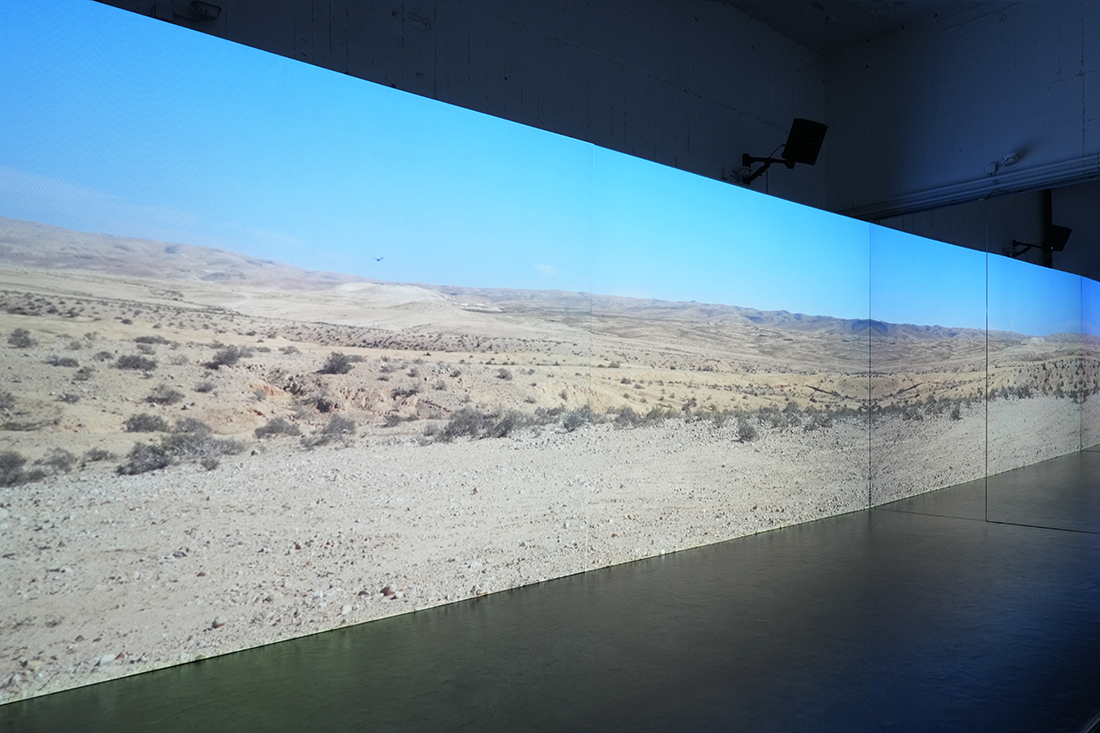




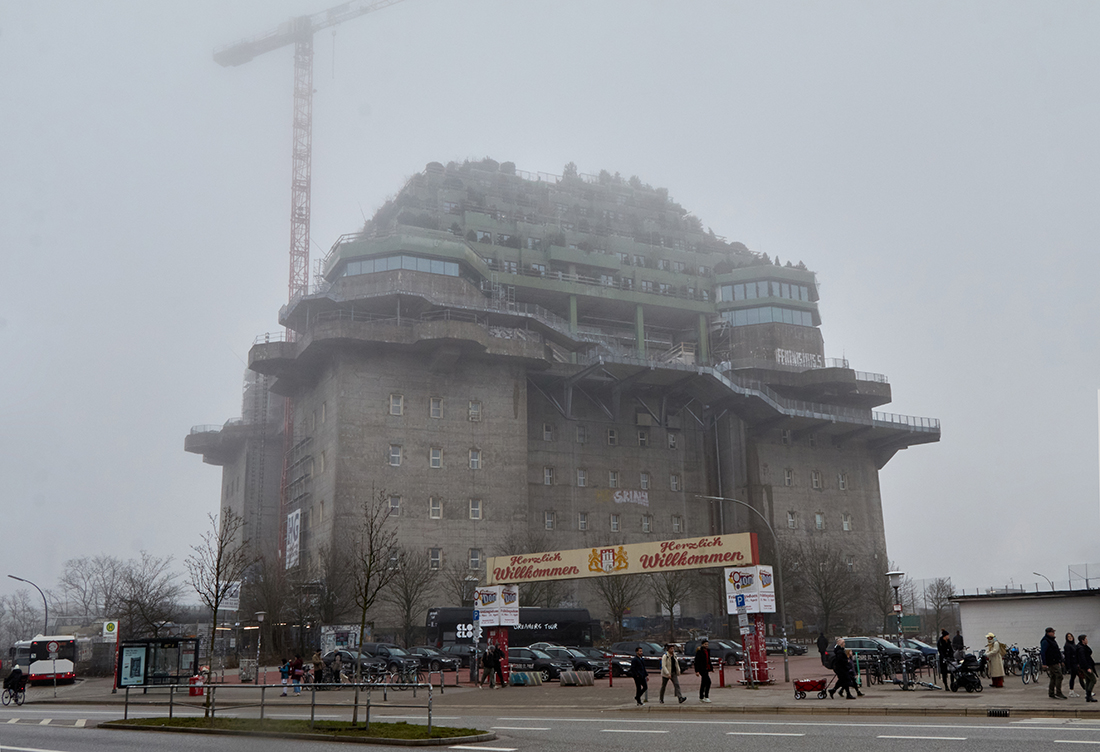
Fotos: Jaewon Kim (1-5), Mattia Quaglia (6)